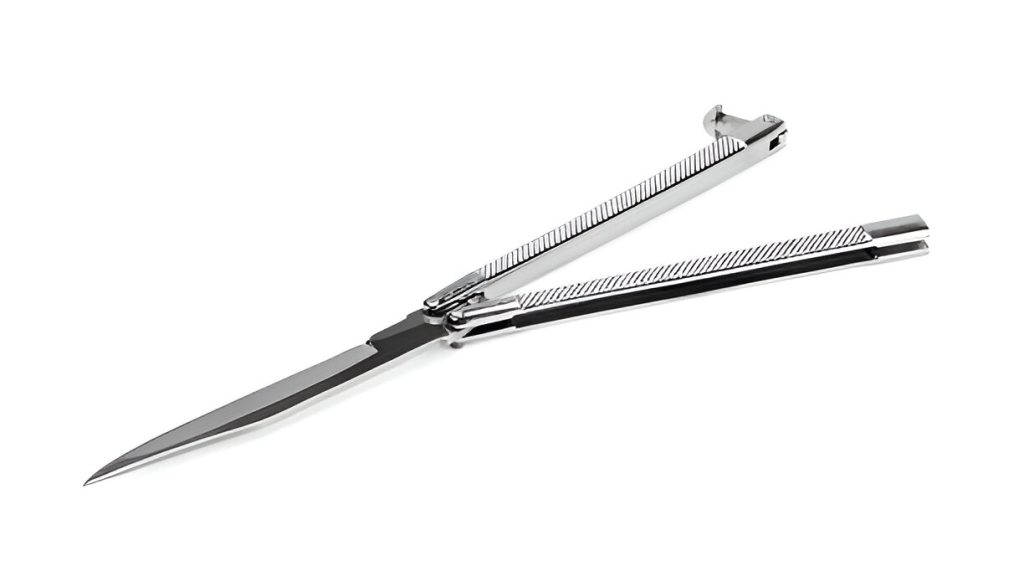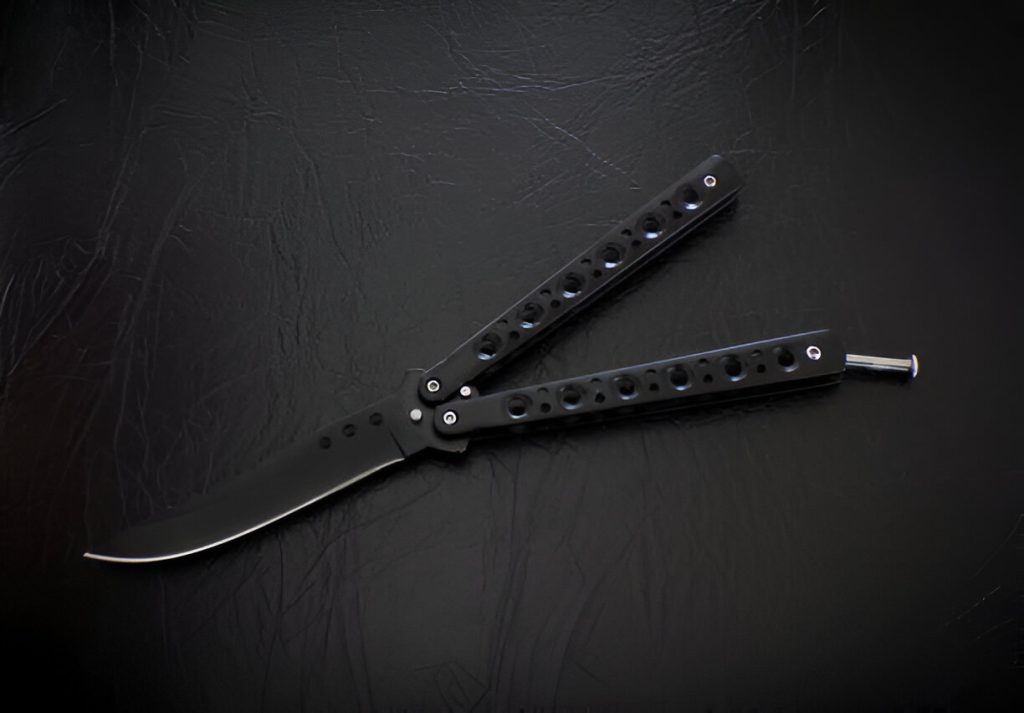Table of Contents
Let’s get one thing straight: if you’ve ever flipped a butterfly knife or seen someone show off their flipping skills, you’ve probably heard, “You know those balisongs are illegal, right?” Well, it’s not just a rumor—there’s a reason why these iconic knives are banned in many places. But why? That’s what we’re here to explore.
While butterfly knives (or balisongs, as they’re also known) have earned a spot in pop culture, from flashy stunt scenes in movies to viral flipping tricks, their legal status is often misunderstood.
They’ve gained a reputation, and that’s led to a variety of legal restrictions. But let’s dig a little deeper and break down the main reasons why butterfly knives are illegal in some parts of the world.
What Are Butterfly Knives?
In simple terms, butterfly knives are unique folding knives that stand out thanks to their distinctive design. Featuring two handles that rotate around the tang, these knives conceal the blade when closed, making them both a functional and intriguing tool.
Originally, butterfly knives were used as everyday pocket knives and even for self-defense. Interestingly, they were once referred to as “click-click knives” because of the sound they make when flipping open.
While many enthusiasts appreciate them for their craftsmanship and the skill it takes to flip them, the knives have also earned a reputation for being dangerous and potentially lethal. So why is that?
Why Are Butterfly Knives Illegal?

The legality of butterfly knives can vary significantly depending on where you are. While some places view them as harmless, cool gadgets, others see them as a serious threat. Here’s why:
Safety Concerns
The very design that makes butterfly knives cool also makes them dangerous. The flipping action, while flashy and entertaining, can lead to serious accidents.
Imagine trying to perform tricks or even just handling the knife casually—the risk of injuring yourself is high.
Authorities have long been concerned about the number of injuries related to these knives.
Whether it’s a simple slip while flipping or an accidental misfire, the speed at which these knives can be deployed has contributed to their legal restrictions.
Potential Misuse
Though they can be used for everyday tasks, butterfly knives are often associated with violent crimes, and here’s why: the quick deployment and sharp blades make them ideal for quick, sudden attacks.
This has led to concerns about the misuse of balisongs, particularly by people looking to use them in criminal activities.
Street gangs, for instance, have been known to favor butterfly knives for their intimidation factor and ease of concealment.
While they may seem like just a cool knife to flip, their use as weapons has given them a bad name and led many regions to outlaw them.
Concealability
One of the most concerning aspects of butterfly knives is their ability to be easily concealed. Because the blade folds into the handles, it’s easy to hide and carry them around unnoticed.
This concealability has made them particularly appealing to those looking to carry a weapon without drawing attention.
In many places, laws regulating concealed weapons are strict. The ability to carry something so easily hidden adds to the concern about their use in criminal activities, which is one reason they’ve been banned in several countries.
Media Influence
Let’s face it: Butterfly knives have earned their reputation thanks to media portrayals. From action-packed thrillers to reality shows, these knives are often depicted as weapons used by dangerous characters.
That portrayal has led to the perception that all butterfly knives are inherently dangerous and violent.
The media’s influence cannot be ignored. We see them in movies, TV shows, and viral videos, often in the hands of criminals or thrill-seekers.
This portrayal of balisongs as tools of violence has undoubtedly contributed to their illegality, as authorities fear that the knives could inspire or escalate real-world violence.
Speed and Ease of Deployment
One of the most defining features of butterfly knives is their ability to open and close quickly with a single hand. While this is impressive from a technical standpoint, it also makes them a dangerous tool.
In a high-pressure situation, the speed at which the blade can be deployed makes the knife more of a threat than a typical folding knife.
In confrontational scenarios, this swift deployment can lead to quicker reactions, which, when combined with the knife’s sharpness, can have serious consequences.
It’s this feature that often leads authorities to classify them as offensive weapons.
Where Are Butterfly Knives Illegal?
The legal status of butterfly knives is far from uniform. While they are legal in some places, they are outright banned in others. For example:
- Hawaii, Germany, the United Kingdom, and Australia have laws that prohibit the possession and carrying of butterfly knives.
- France and Finland, on the other hand, have less strict regulations and allow their ownership under certain conditions.
While the specifics vary from place to place, it’s important to remember that butterfly knives are illegal in many regions because of their potential for misuse, ease of concealment, and rapid deployment.
Final Words
So, are butterfly knives dangerous? Yes, they can be if not handled properly. Are they illegal everywhere? No, but they are heavily regulated in many parts of the world.
While they can be a fascinating hobby for knife enthusiasts, it’s crucial to understand the legal implications before buying or carrying one.
Before you add a balisong to your collection, do your research. Check local laws to ensure that you’re not breaking any regulations.
And if you do decide to practice flipping tricks, make sure to use proper safety precautions and handle the knife responsibly.
Ultimately, the debate over whether butterfly knives should be illegal comes down to safety, perception, and legal concerns.
As with any potentially dangerous item, it’s important to weigh the pros and cons and stay informed about the laws in your area.






